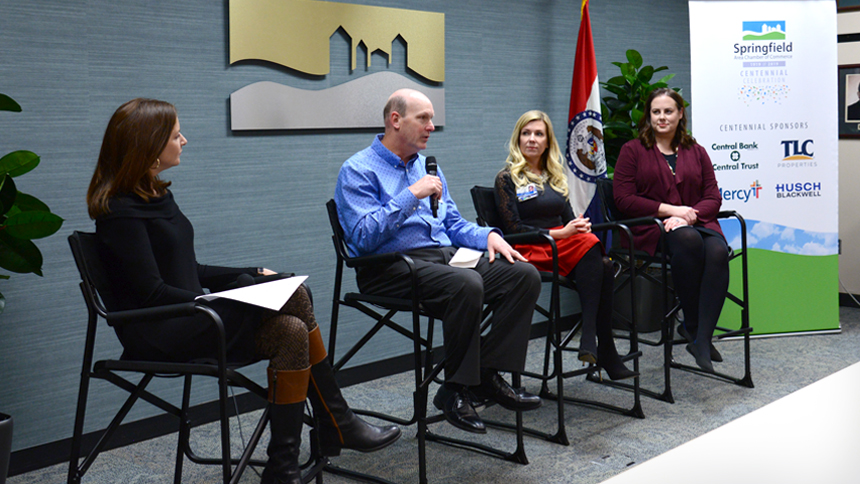Strategies to attract talent to your organization and the community

Individuals are drawn to jobs in Springfield for a variety of reasons ... but developing tactics and strategies to attract new employees is at the top of the to-do list for most employers in our area.
That’s part of the reason why the Chamber focused the final event in its 2019 Workforce Event Series on “Best Practices in Talent Attraction.” The panel of speakers that visited the Chamber on November 12 included people who spend their time working to bring professionals to Springfield, as well as those who came to the area themselves for a variety of reasons.
One person who fits both categories is Celeste Cramer, system director of recruitment and retention for CoxHealth. She said her family had been from the south but moved to Springfield after visiting the area one winter and falling in love with the snowy weather.
Now, roughly three-quarters of Cramer’s daily job is tied to recruitment for CoxHealth, which currently has 1,100 organizations systemwide. She says the organization focuses on selling the value of the city and what it can offer potential new hires from around the country and the world.
“When we bring someone in, we do everything local – local hotel, local restaurants, local swag,” she said. “We use the materials from the LiveInSpringfieldMo website as well; one time I was recruiting in Dubai and was showing them the video, and one recruit asked, ‘Is it really like that?’”
For Ashley Norgard, associate attorney with Kutak Rock, LLP, the approach is different. She said her firm takes a team approach to recruiting potential employees – taking them out to lunch or a ballgame as a group. The approach is common in firms with a centralized HR function and offices in multiple cities, where local staff are often responsible for recruiting new talent.
It’s part of what she says is an important task: selling the community lifestyle. That task is especially important online, where more professionals are getting their information about your community and your business.
“I had a Google search and 18 hours in Springfield before I decided to sell my house in Alabama and move to Springfield,” she said. “If the bios of your company executives include personal information or hobbies, it gives the candidate something to talk about. If I’m moving here and going to be here 14 hours a day, it’s almost like a marriage, so if you can show they have a good quality of life, that’s crucial.”
That point was echoed by Stephen Telscher of Sapp Design Associates Architects, PC, who also serves as president of the Springfield chapter of the American Institute of Architects. He said that as his industry evolves and architects have more choice as to where they can locate for work, selling the city is key.
“When it comes to Springfield, it’s important to tell people about the other 16 hours of their life,” he said. “The arts, the music – architects hover around those things, and we’ve come a long way in those areas in recent years. With Downtown, Commercial Street, the great sporting venues ... it’s fantastic what we’ve been able to do, and we have to tell people about it.”
That also means encouraging individuals in your organization to tell your story – both for your company and for your city. Both Cramer from CoxHealth and Norgard from Kutak Rock touted the benefits of referral bonuses for employees who successfully bring new employees to the business.
“People are your most important asset,” Norgard added. “Encouraging and empowering them to know that they are a part of telling your story is incredibly valuable.”

